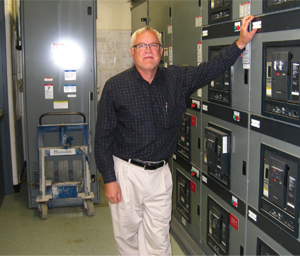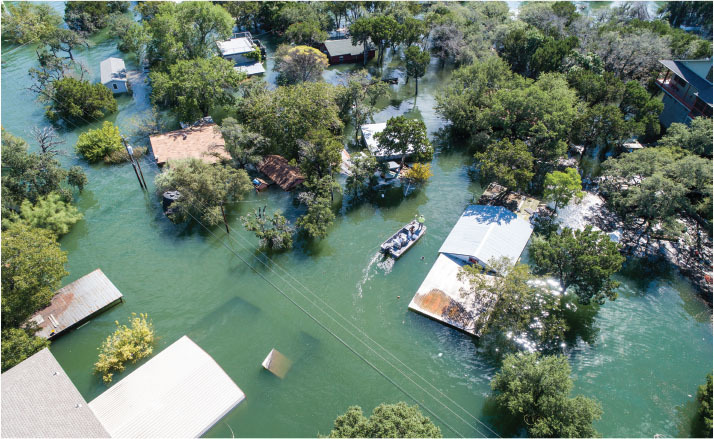March/April 2018
Concepts
Don’t Turn Your Head to Rubber Stamping
BY D. E. NOLTE, P.E.
 I’ve been working in the engineering built-environment field for over 39 years and as a licensed PE for the last 20 years. Becoming a PE was not an easy task for me. I’m not the “sharpest tack in the box,” and I waited too long after graduating from university to sit for the FE and PE exams. This may be why I take such a strong stance against the following:
I’ve been working in the engineering built-environment field for over 39 years and as a licensed PE for the last 20 years. Becoming a PE was not an easy task for me. I’m not the “sharpest tack in the box,” and I waited too long after graduating from university to sit for the FE and PE exams. This may be why I take such a strong stance against the following:
- “Rubber stamping” by licensed engineers (reviewing and sealing without any responsible control);
- Firms, such as architectural and design-build firms, hiring nonlicensed engineers for contract work supporting nonlicensed firms;
- Licensed engineers working outside their area of expertise to stamp drawings; and
- Design-build firms not having a licensed engineer in responsible control of their projects, then going to a PE to “review and stamp” drawings.
I also feel a responsibility to our profession and the public for long-term and continued improvement in engineering-related practices. After I read the rules and regulations, I realized the above four practices are clear violations in the states where I have practiced, if not all states. Reviewing and sealing a project does not encompass the engineer’s past experiences or his or her values and learned issues of sound design, strong stewardship of the owner’s costs, proper product selections, future growth or values, and other considerations. Generally, such reviews are only about the bottom-line cost. In many cases, the engineer has never met with the project owner, has never sat in a team meeting to discuss project nuances, has never been on the site, and thus does not have a first-hand understanding of the owner’s operation for safety or operational issues. By rubber stamping, PEs basically reduce themselves to inspection authorities reviewing for minimum code issues.
How can the PE really be in responsible control of the project to protect the public health, safety, and welfare by “review and seal”? And why should PEs take on the liability of sealing documents when they have not had responsible control over the project? Would your insurance company even cover errors and omissions due to the “rubber stamper” knowingly not following state rules and regulations?
We can’t afford and should not do this as a profession!
Our engineering community must perform its own self-imposed policing because many states have no way to track possible violations nor the budgets for follow-up investigations. Poor practices are typically hidden and discovered by word-of-mouth or during impromptu discussions where the infraction occurred months ago. Often, we turn our heads and do nothing. Larger engineering firms tend not to run up against this issue, but the medium to small firms do, on a somewhat regular basis. But again, engineers are busy, and we don’t want to “squeal” on the known violator within our technical community. So, bad practices continue, weaken the engineering profession, and set the precedent for younger licensed engineers to accept this practice and earn extra money.
Does this protect the health, safety, and welfare of the public? What does this do long-term to the practice of engineering? Why sit for the exam? What size project would this be allowed on? Who makes this call?
Contractors have called my firm asking my “rate schedule” for “review and sealing”—like this is common practice! This alone confirms that the practice has become more common. So, as a profession, do we agree or disagree with this direction? How do we reverse or stop it?
To improve awareness of the issue and begin efforts to reverse these practices, many segments of the profession need to act together. NSPE state societies and chapters can regularly post information in their newsletters and other publications. All licensed engineers need to read and fully understand their state laws, rules, and regulations. State engineering boards need to offer instruction on just what sealing documents means and what penalties are possible if not carried out correctly. They also must continue to lobby for additional funding for follow-up investigations. And when violators face penalties, the details of those cases should be published to reinforce the seriousness of the infraction.
Sadly, licensed engineers, too, need to take an increased, active stance and speak up against violators. Reporting flagrant violations must be done and should be an accepted standard within the engineering community. By working together, we can stamp out these violations and build a stronger profession.
NSPE member D. E. Nolte, P.E., is an electrical engineer and owner of Next Engineering & Design in Rockford, Michigan.


 Volunteering at NSPE is a great opportunity to grow your professional network and connect with other leaders in the field.
Volunteering at NSPE is a great opportunity to grow your professional network and connect with other leaders in the field. The National Society of Professional Engineers (NSPE) encourages you to explore the resources to cast your vote on election day:
The National Society of Professional Engineers (NSPE) encourages you to explore the resources to cast your vote on election day:



